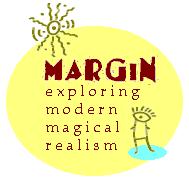

M I N I - S E R I E S R E V I E W
How to Wed, Bed and Behead
c a p t u r i n g 1 0 0 1 n i g h t s i n 3 h o u r s
BY S.L. DEEFHOLTS
ARABIAN NIGHTS
© 2000 (TV)
Directed by Steve Barron
180 minutesTHE TELEVISION mini-series of the Arabian Nights presents an interesting variation on the original text. The thousand and one nights of lore have been considerably compressed to accommodate the limitations of a three-hour format. Of course, these contraints of prime-time television also mean that this version is far more palatable than the original: instead of a psychotic Sultan who takes the "once bitten twice shy" notion to murderous extremes, this version features a Sultan distracted by grief and betrayed love. He simply threatens to wed, bed and behead a different woman every night, rather than actually doing it -- and we all do see how close this television Sultan is to madness. In this version, Scheherazade is the first volunteer. She has secretly loved the Sultan for some time and so she selflessly steps in with the doubly noble motive of saving her beloved from his own dark side and of averting the deaths of the women the Sultan threatens to marry and murder.
All these factors allow the audience to like the characters more easily and to sympathise with their predicaments, rather than dealing with the ambivalence and questions raised by the original text. But, for all that, it is a very attractive production which vividly recreates the magical exoticism of an "Arabia" that probably owes as much, if not more to Europe's romanticised view of the east -- with a healthy dose of modern North American sensibilities thrown in -- than to the historical reality of it. This is a pretty, fictional world, where we can feel comfortable, unworried by the controversies of actual history, so that ultimately, we can sit back and enjoy the excitement of the tale.
The magical realism elements also add to the appeal of the production -- and they have certainly been well transcribed from the page to the screen. The Thousand and One Nights presents an interesting manifestation of magical realism. On one level, it can be found in the layering and embedding of the narratives. This, of course, results in the familiar, postmodern "hall of mirrors," with the stories reflecting upon each other. What pushes this particular work over the border, into the realm of magical realism, is the fact that in these stories, the reflections invoke changes in the original.
And so, in the printed text, Scheherazade's multiple stories about storytellers allow her to re-tell her own reality and begin to fashion a hope for survival. This kind of dense layering is certainly not feasible in a short television mini-series, so the magical realism manifests in a way that is more visually friendly: namely, via the transitions and the crossovers between the fictions and the reality of the story. And so, we find that Scheherazade's tales literally create worlds. They initially manifest in the intimacy of her interactions with the Sultan, but soon they expand into fuller realities, which the characters of the frame narrative can practically step into. This, of course, reaches its visual culmination in the final story, where the two realities overlap by means of a doubling of the roles played by the principles.
In this way, the production features some evocative segues between the frame narrative and the embedded stories. These elegant transitions allow the magic of her narratives to seep into the reality of the frame narrative and transform it.
The production also allows for a far more explicit contemplation of the nature of narrative by inserting a sub-plot, in which Scheherazade is faced with doubts about her ability to sustain the Sultan's interest. She visits a popular storyteller every day, asking for advice. They embark upon an intriguing discussion of the nature and limitations of narrative, though not in such depth as would slow down the pace of the story. Still, it is an appealing sideline which has been skillfully tied into the central narrative -- a postmodern kind of embedded self-analysis.
All in all, it is a vivid, lavish production that works well within the limitations of its form and format. Certainly, it is worth renting on some night when you're in the mood for a light, Arabian fantasy.
For more information about this movie, please visit The Internet Movie Database
margin home | contents | links | reading list | marginalia | contributors | staff | guidelines | kudos | subscriptions | contact us
Want to know about UPDATES and NEW ADDITIONS to MARGIN?
Try our opt-in subscription
It's absolutely free!
Layout, design & revisions
©1999, 2000, 2001, 2002, 2003 Tamara Kaye
Sellman, Webmaster
Active home URL:
http://www.magical-realism.com
(also:
https://www.angelfire.com/wa2/margin/index.
html)
TERMS OF USE: This site contains copyrighted materials, including but not limited to text and graphics. You may not use, copy, publish, upload, download, post to a bulletin board, include in any weblog or otherwise transmit, distribute or modify any elements of this site in any way, except that you may download one copy of such contents on any single computer for your own personal, non-commercial use, provided you do not alter or remove any copyright, author attribution or other proprietary notices.Rev'd 2003/03/27